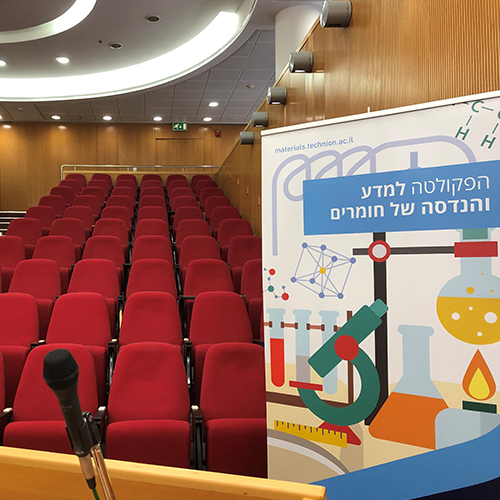
Mrs. Yana Grishchenko - MSc candidate
22/01/2023
אודיטוריום ע"ש דויד וואנג, בניין מידן, קומה 3
14:30
Cellulose is a widely used natural polymer synthesized by plants and some bacteria. It was discovered that cellulose has piezoelectric properties. Recent studies showed that bacterial cellulose, is different from plant-based cellulose in that it is purer and has superior mechanical properties, higher crystallinity, and better piezoelectric response. These properties are attributed to the absence of additives and the higher percentage of Iα cellulose. Raw bacterial cellulose a hydrogel made up of nanofibers. However, the disorder of these fibrils leads to a lower piezoelectric response due to averaging.
In order to improve the piezoelectric response, it is necessary to dry the samples in a way that enhances crystallinity and preferred orientation, reducing the averaging effect, which was the motivation for our research.
Commercially available bacterial cellulose was used, and various drying methods under the application of unidirectional and biaxial stress were employed. We studied the effects and mechanical properties of samples which underwent drying procedures using different stress rates, applied stress and drying duration on the final arrangement of the fibers. The samples were analyzed using X-ray diffraction and showed some preferred directionality, which was also noticed in the SEM micrographs. We will discuss the results in light of the initial piezoelectric characterization of the films.
Overall, these results suggest that external dehydration process conditions can influence the interfiber interactions and alignment, which impacts the macroscale properties.
BIO
B.Sc. in Material Science and Engineering and Chemistry


